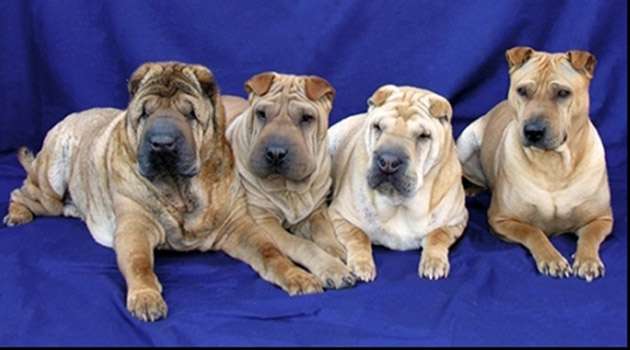“The more we learn about the interplay between hyaluronan and the inflammatory immune response, the more we can contribute to both human and Shar-Pei health” Credit: Kathleen Long
A validated genetic test is now available to measure the copy number variant (CNV) linked to Shar-Pei Autoinflammatory Disease (SPAID), reveals an international collaboration lead by scientists and veterinarians at Uppsala, Sweden and Wurtsboro, New York, USA. Details were published in the April 23 edition of the open-access journal BMC Genomics.
This work represents the third step in the group's ongoing research into the relationship between the Shar-Pei dog breed's unique skin appearance and a complex hereditary syndrome, SPAID. In 2011, the team first reported the existence of a duplicated segment of DNA upstream of the gene hyaluronan synthase 2 (HAS2) in Chinese Shar-Pei which was linked to the overproduction of hyaluronan. This molecule is required to form the breed's characteristic thickened and wrinkled skin, however, overproduction can drive the activation of the dog's immune system and result in a periodic fever. The group noted that the dogs with the highest number of duplicated copies carried the highest risk of suffering recurrent fever flares. The term SPAID was coined in 2013 when the same team published the results of their second genetic study showing that fever was only one of five clinical signs that were linked to the same region of the genome. The others were arthritis, otitis, vesicular hyaluronosis and amyloidosis.
The breakthrough in translating their research into a test that could accurately determine the true copy number variation (CNV) of this duplication came through access to new technology, explains senior author of the study, Dr Jennifer Meadows:
"The results were so elegant; with droplet digital PCR we were able to follow the inheritance of the CNV over multiple generations, showing how the duplication was passed from parents to their litter. This clarity meant we could finally calculate that if a dog has five copies of the CNV on one chromosome, it is four times more likely to suffer SPAID".
Dr Linda Tintle, a veterinarian with more than twenty years striving to improve the breed's welfare notes: "The wait for our first genetic test is over. We can now breed away from dogs with a CNV =10. These are the individuals most likely to suffer the debilitating signs of SPAID, including Shar-Pei Fever".
"This breed is incredibly special", says Dr Meadows. "The more we learn about the interplay between hyaluronan and the inflammatory immune response, the more we can contribute to both human and Shar-Pei health".
The test will be offered in Europe through SLU, Sweden with an American centre to follow shortly.
More information: M. Olsson et al. Absolute quantification reveals the stable transmission of a high copy number variant linked to autoinflammatory disease, BMC Genomics (2016). DOI: 10.1186/s12864-016-2619-0
Mia Olsson et al. A Novel Unstable Duplication Upstream of HAS2 Predisposes to a Breed-Defining Skin Phenotype and a Periodic Fever Syndrome in Chinese Shar-Pei Dogs, PLoS Genetics (2011). DOI: 10.1371/journal.pgen.1001332
Mia Olsson et al. Thorough Investigation of a Canine Autoinflammatory Disease (AID) Confirms One Main Risk Locus and Suggests a Modifier Locus for Amyloidosis, PLoS ONE (2013). DOI: 10.1371/journal.pone.0075242
Journal information: BMC Genomics , PLoS Genetics , PLoS ONE
Provided by Uppsala University























